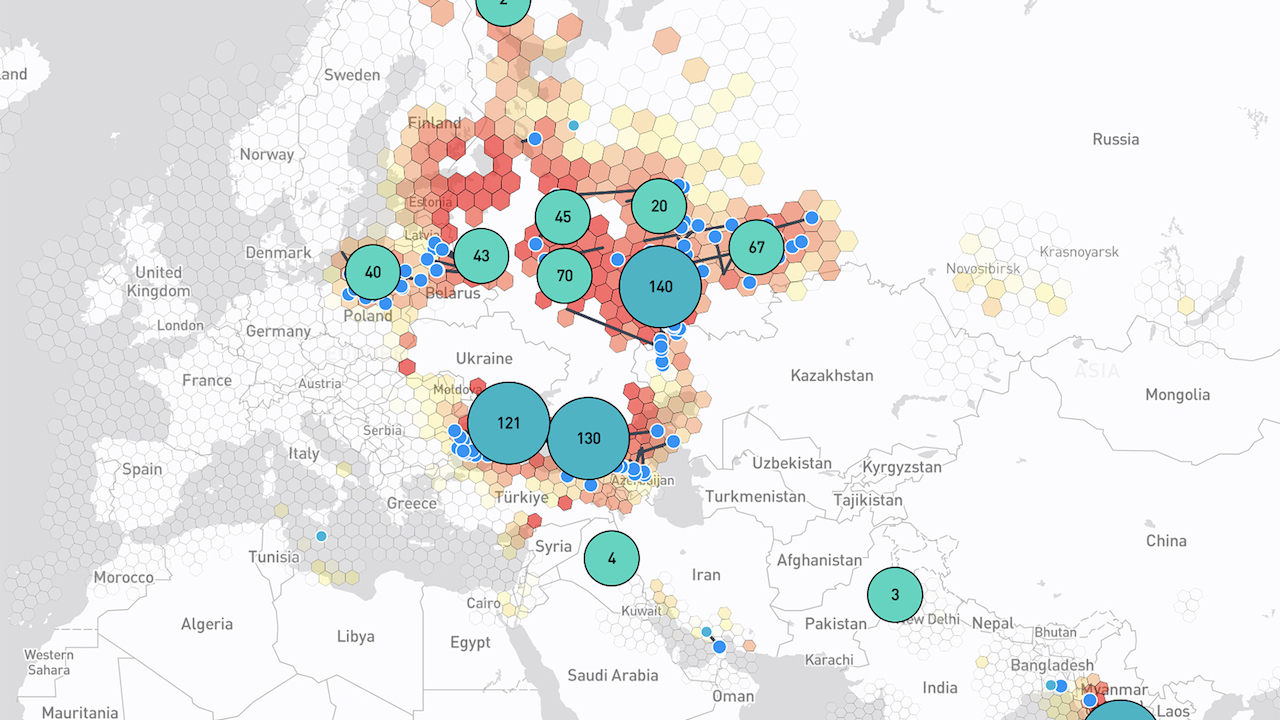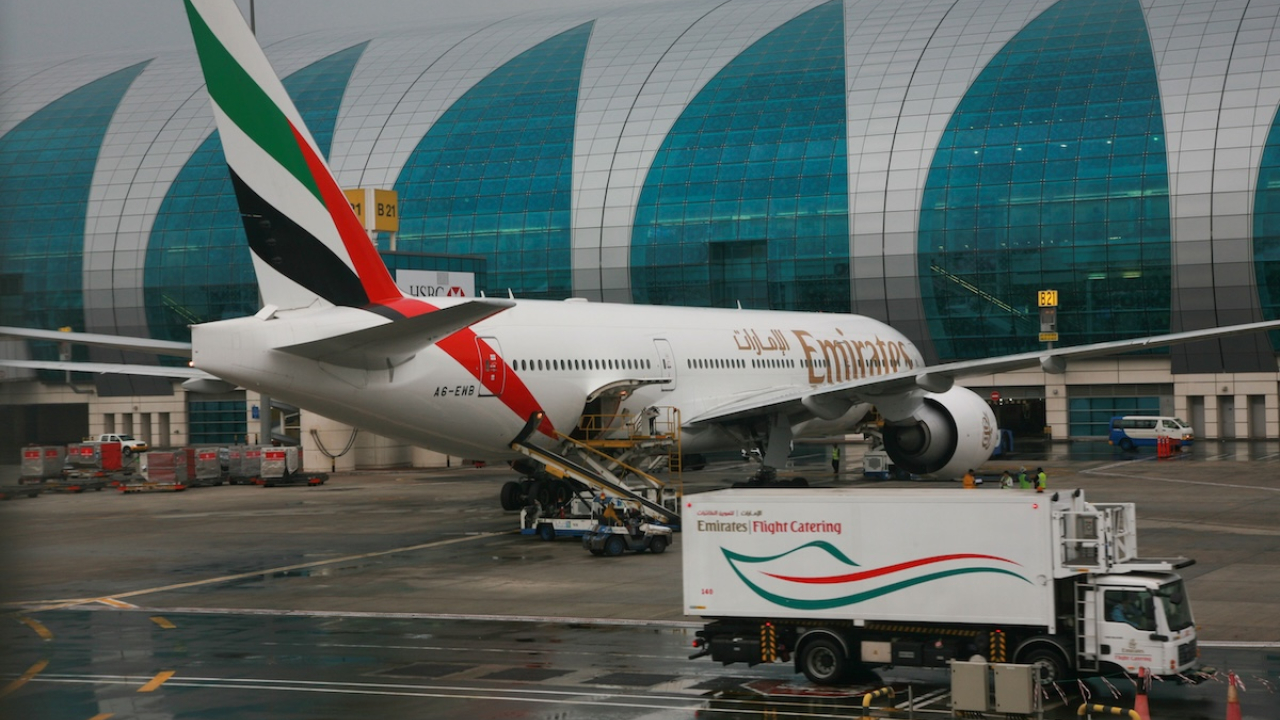Deliberate GPS interference – can we stop jams spreading?
Interference to GPS systems by jamming and spoofing is increasing risk to commercial and business aircraft.

A map showing areas of GPS interference over a 24-hour period. More than 41,000 attacks occurred in one calendar month. IMAGE: Osprey Flight Solutions
The pilots on an Airbus A380 bound for Europe were relaxed. After a normal departure from Dubai the aircraft was at a cruise altitude of 38,000 feet.
In a second everything changed. Instead of the map showing their position over the Egyptian desert they were close to Beirut Airport and at 2,000 feet. “TERRAIN WARNING” came an alert. “PULL UP, PULL UP”
It was late 2023 and the war with electronic interference had begun. This incident was an example of spoofing. Within a year spoofing and GPS jamming had become a familiar experience for crews
GPS jamming and spoofing are significant concerns for aviation, particularly in regions like the Middle East. Jamming involves the deliberate transmission of signals to disrupt GPS receivers, leading to a loss of positioning information. Spoofing, on the other hand, entails broadcasting counterfeit GPS signals to mislead receivers about their actual location.
In the Middle East, especially over areas such as the Iran-Iraq region, there have been numerous reports of GPS-spoofing incidents affecting both commercial and business aircraft.
Pilots were reporting sudden and complete failures of their navigation systems due to these deceptive signals. In some cases, aircraft systems incorrectly indicated positions hundreds of miles off their actual course, forcing crews to rely on air traffic controllers for guidance.
On Christmas Day 2024, the Azerbaijan Airlines Flight 8243 was hit by an anti-aircraft missile and crashed killing all on board. The flight had been hit by electronic interference.
Western investigators and the president of Azerbaijan have concluded that the airplane was damaged by Russian air defences. The Russians had been jamming GPS in the area for weeks to counter Ukrainian drone attacks. This undoubtedly prevented them from properly identifying the Azerbaijan flight, leading them to open fire.
While this may be the first instance of civilian deaths directly attributable to GPS interference, warning signs have been around for years.
Russia's federal air transport regulator now advises operators to train pilots in non-precision approaches due to potential satellite navigation interference. Rosaviatsia also recommends regular training for aircraft control system failures and worst-case scenarios.
The training issue is under debate across the industry.
At the Middle East Aviation Conference organised by Dubai-based aviation law firm HFW in February, the issue came under close scrutiny.
Former chief engineer of the Red Arrows and safety expert, Ross Priday, the technical director of leading global consultancy in risk mitigation, HKA, said that in one month period from 15 July to 15 August 2024, a total of 41,000 flights experienced system interference of some assault. He warned that ongoing interference incidents is presenting increased risk for crews who are not prepared.
“Very few operators have simulator sessions to adequately train for interferences,” Priday said. “Simulator software is simply not programmed to replicate the myriad of failures and problems that are being experienced in the real world. Secondly, in most cases, there's a lack of procedural format for briefings on interference.”
Priday said that due to the lack of guidance, crews are sometimes coming up with their own procedures for fault, diagnosis and solutions.
"There have been incidents of aircraft manually disabling aircraft systems, and in doing so, unintentionally, cutting across OEM advice for an active malfunction, doing so with the very best of intentions, of course, can adversely impact navigational capability, deviating from certification requirements and operational improvements.”
Meanwhile, work on improving GPS receivers to detect and alleviate jamming and spoofing impacts on aircraft systems is “years away” from fruition, according to Honeywell principal applications engineer David Woodcock at the NBAA Operators’ conference.
However, some improvements to its enhanced group proximity warning systems (EGPWS) and Epic avionics used on business aircraft, such as Gulfstream, Bombardier and Dassault, could be in place next year to fix incorrect geometric altitude and false alerts.
Stay up to date
Subscribe to the free Times Aerospace newsletter and receive the latest content every week. We'll never share your email address.


